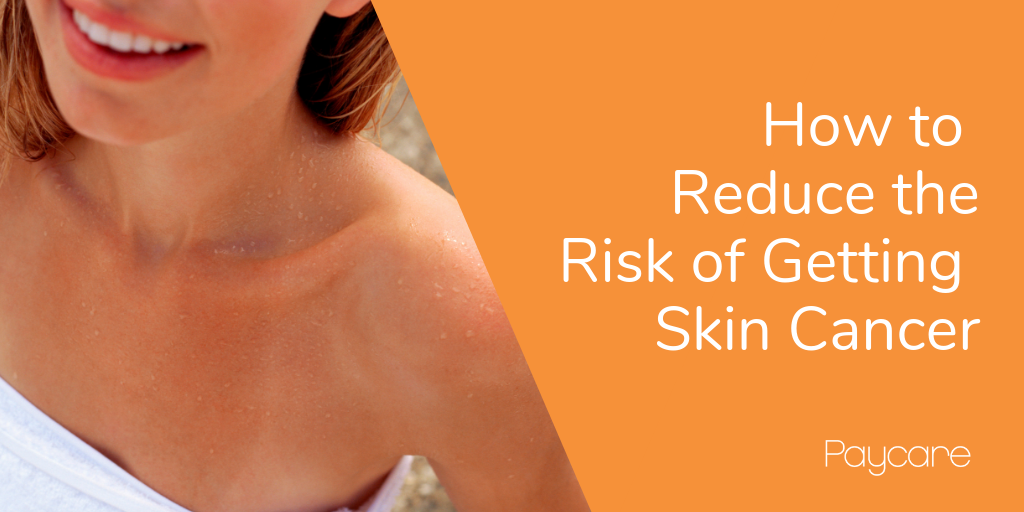Ah Summer… that time of the year where we are tempted to spend a few hours in the garden after a day at work or lie in the sun all day on a long-awaited (and very much deserved!) holiday. Sounds like bliss…
But, whilst many of us love soaking up the sun in a quest for bronzed skin how many of us actually remember to stay protected in the sun? And do we really know all the dangers of sun-exposure?
Well, here at Paycare, we believe prevention is better than cure.
That’s why, we’ve shared some incredibly useful tips to prevent sunburn (we’re all guilty of forgetting to re-apply sun cream throughout the day) and how we can reduce our risk of getting skin cancer…
“Tragically, 1 in 54 people will be diagnosed with skin cancer in their lifetime.
What’s worse is that across England 10% of all skin cancer diagnoses are made at a late stage, when the cancer is most difficult to treat.
In our latest Health Tips for You blog, we take a look at how you can stay vigilant whilst enjoying the sun and share 5 easy ways to reduce your risk of long-term skin damage – take a look!
Know when to get your moles checked
There are changes you should look out for that may indicate an abnormality with your moles.
Everyone has moles, and this is normal. However, there are several important changes you should look out for that may indicate an abnormality:
Colour – Your moles should be a shade of brown. If you begin to see different shades or colours on any of your moles, you should report this change to your doctor and ask them to inspect the mole.
Shape – Your moles should be round. If any mole begins to grow in a different angle, or change in shape in any way, you should have it checked by a doctor.
Size – If your mole grows, you should have it checked by a doctor immediately.
Crusting – If a hard, uneven layer of skin resembling a crust begins to form on any of your moles, you should have that mole checked by your doctor.
Blood or oozing – If you observe any blood or oozing from a mole, you should see a doctor immediately.
Pain – If a mole is causing you pain, you should have it checked.
Always wear sun cream and remember to re-apply.
Skin that frequently burns is highly susceptible to cancer. Make sure that you always protect yourself from UV rays by wearing an appropriate level of SPF. Also, try and stay in shaded areas for as long as possible between 10am and 4pm when the sun is at its hottest.
In the heat, we sweat. Many of us also go swimming to cool down if we find ourselves near a pool or the sea. This washes away the sun cream we have applied. Even if you applied factor 50+ all over your body before heading to the beach, after a few minutes in the sea, you can find yourself directly under the sun, with no cream left on your body.
The consequent damage to your skin cells can be devastating and potentially carcinogenic. You should re-apply sun cream every two hours for as long as you are out in the sun, and straight away after you’ve dried off from that dip in the pool.
Even in the winter, it’s important to wear sun cream (particularly on your face) because clouds do not stop the penetration of UV light. You might get caught out on breezy ‘bright days’ when it doesn’t feel very warm, but the UV light can still cause skin damage.
Top Tip: Some makeup and moisturisers have a built in SPF so look out for these!
Take care when playing sports
Almost all sports teams, golf courses and tennis courts enforce a series of strict rules regarding the kit you can wear while playing. Unfortunately, these kits regularly expose participant’s arms, legs and necks to the sun. It is vital that however tense the game is, you remember to bring sun cream with you and re-apply it whenever possible, to protect your skin cells.
Avoid UV tanning beds
The UV rays in sunshine increase your risk of skin cancer. Imagine what happens if you take those UV rays and lie directly underneath them for 10 minutes. Imagine the damage to your skin if you do this regularly.
Every time you use a tanning bed, your skin cells are damaged. Over time, this damage can lead to mutations in your skin cells, which cause cancer. The International Agency for Research on Cancer (IARC) agrees that there is sufficient evidence to prove that sunbeds directly cause melanoma, the deadliest, least treatable cause of skin cancer.
If you want to avoid skin cancer, please, please avoid this form of tanning. There are plenty of other ways to get a tan without burning your skin under UV light.
Speak openly with your friends about skin cancer
A review conducted by the National Pharmacy Association showed that men visited their GP four times a year (compared to women visiting six times) and only visited their pharmacist four times a year (compared to 18 times a year for women). If you see that one of your friends has a mole which looks a bit odd, please encourage them to visit the doctor. That conversation might save their life.”
It really is important to stay protected in the sun, and to err on the side of caution when it comes to recognising any potential early signs and symptoms relating to skin cancer. We definitely won’t be forgetting our sun cream again! If you’re a Paycare Policyholder struggling to get hold of an appointment with a GP or simply need some trusted medical advice during your summer holiday don’t forget you have unlimited access to our MyPocketGP App.
Happy Summer everyone! #PayCAREforyourself 🧡
***
Source: www.medstars.co.uk

